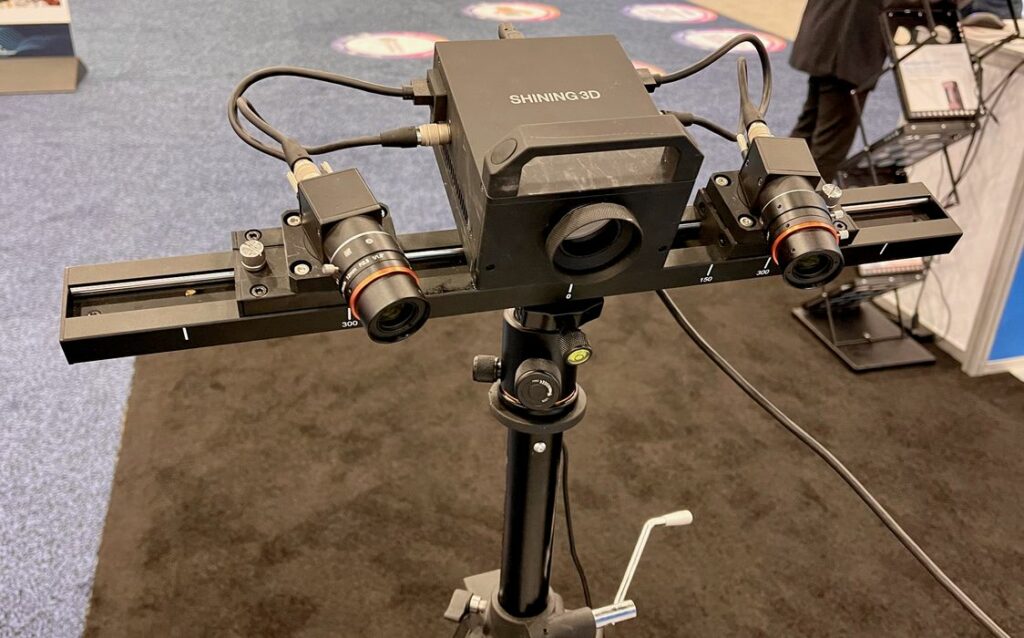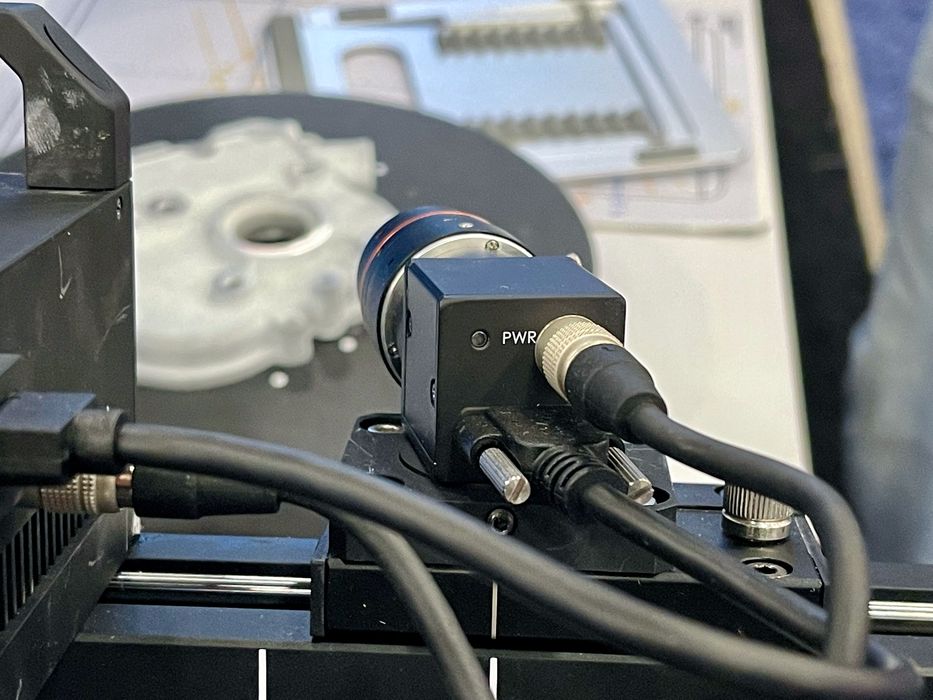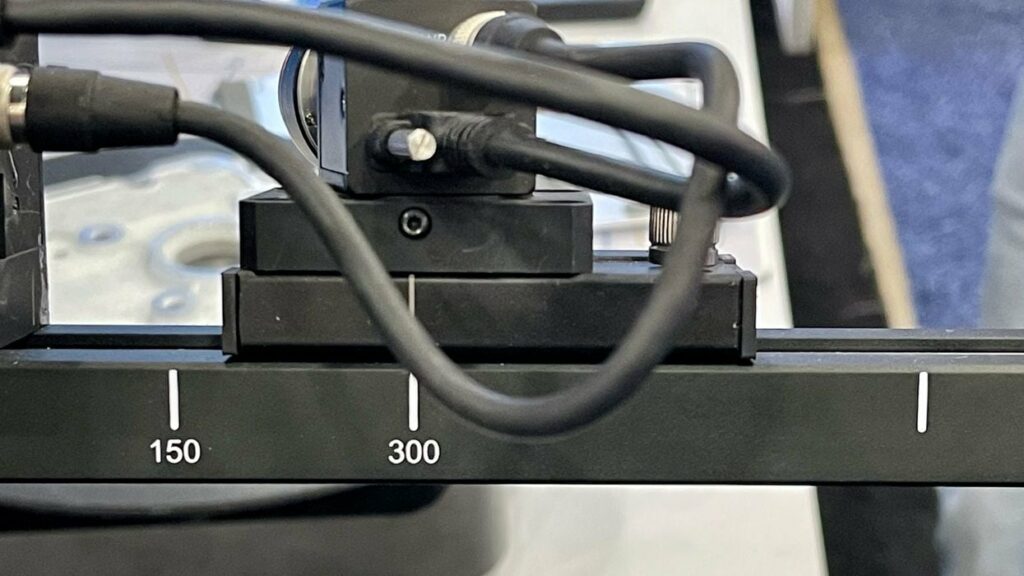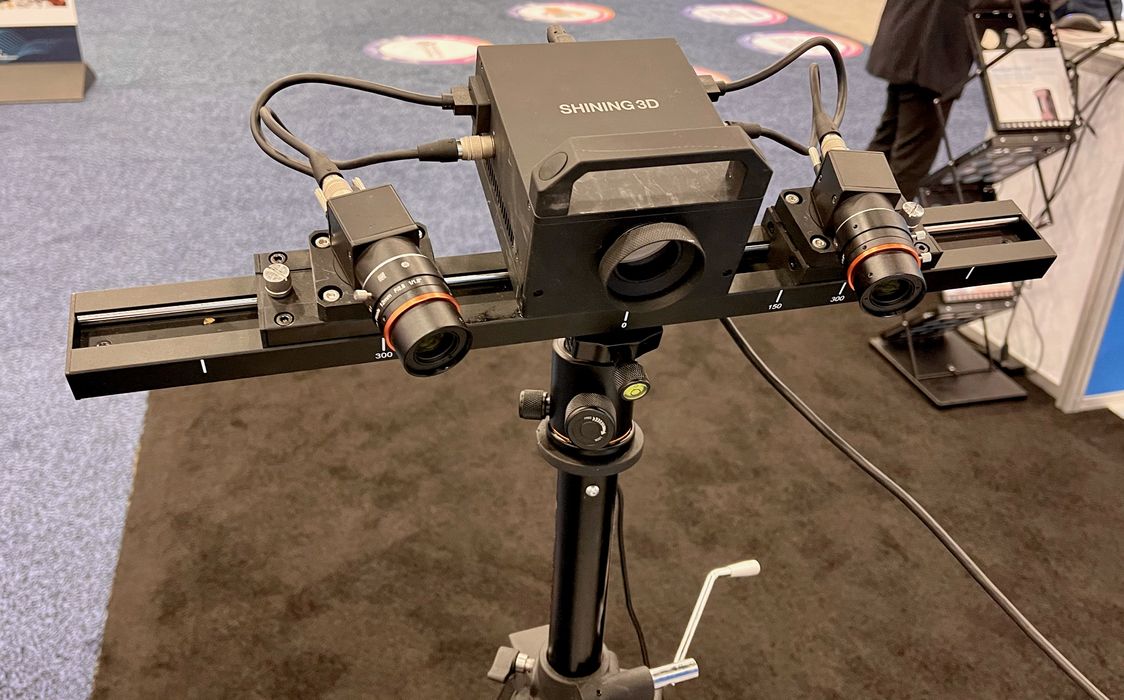
SHINING 3D has developed a very unusual 3D scanner.
3D scanners must extract 3D information from a scene, and this is done by using several techniques, such as laser ranging, structured light projection and photogrammetry. Some systems actually combine several of these into one system.
But one aspect is virtually always constrained on 3D scanners: the size of objects that can be scanned.
Scanners tend to be designed for a particular size of object. For example, tabletop devices with spin tables are set up to capture objects that can fit on the table. You can’t scan an automobile with those devices.
Some handheld 3D scanners allow you to capture larger items, such as an automobile, but they are typically terrible if attempting to capture very fine details on smaller objects, like a coin. Those same handheld devices would not be able to capture a building.
There are speciality 3D scanners designed to capture very large objects like buildings, but again, they are terrible for capturing small objects.
Knowing this, I was surprised to see the new Transcan C from SHINING 3D. They bill this device as a “Multiple Scan Range 3D Scanner”.

What does that mean, exactly?
It turns out this unusual 3D scanner can change its effective range by manually adjusting the placement of its “eyes”.
The device uses the structured light approach, where a standard pattern is blasted at a target. The scanner observes the distortions in the standard light pattern as they flow over the rotating surface, and thus can interpret the 3D shape of the target.
This is a very common scanning approach, and as mentioned above, it works only for objects that fit within the scanner’s designed “envelope”. This is a virtual cube in which the entire target object must be contained during the scan.
If your object is bigger than that envelope, you’re out of luck — or have to do multiple scans and somehow paste the results together in software. This is a lot more work, and can develop problems. It’s usually better to scan objects in their entirety, if possible.
The Transcan C has a unique feature where it can change that scanning envelope. It can be set up to scan objects within a 150 x 96 mm volume for high resolution, or a larger 300 x 190 mm volume if required. The resolutions stated by SHINING 3D are 0.050mm for the larger volume, and 0.035mm for the smaller volume.
This is accomplished by simply sliding the two cameras to the alternate position, as shown in this image.

This relatively simple feature allows the scanner to obtain very high resolution scans of smaller objects, yet also the ability to scan larger items at a reasonable resolution. It’s almost like having two scanners in one.
The Transcan C can also capture color textures are also captured with 24-bit accuracy and 12Mpx size.
This is a very interesting hardware design that might inspire other companies to make scan volume adjustable systems, too. Or at least that’s my hope.
Via SHINING 3D

